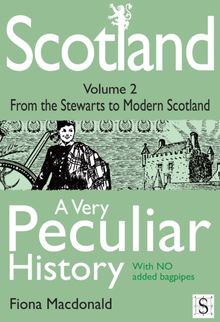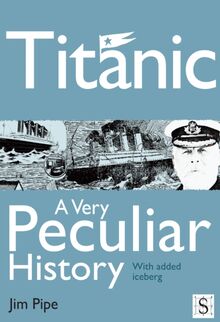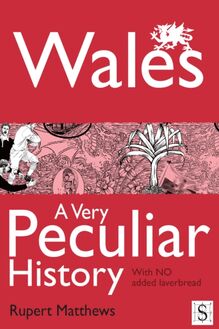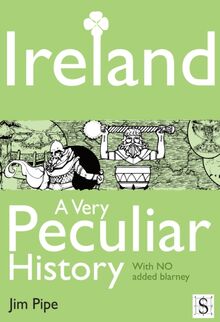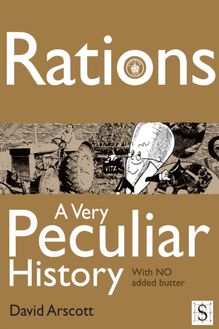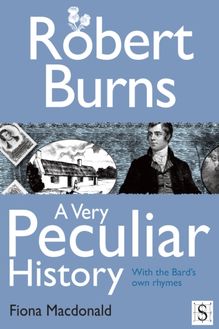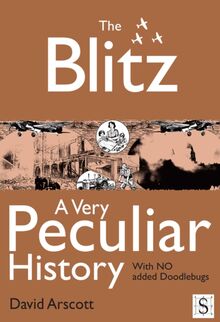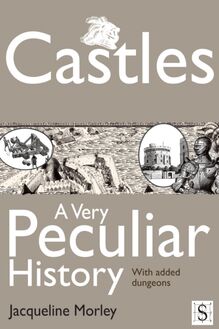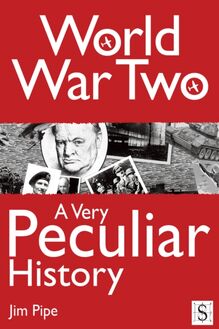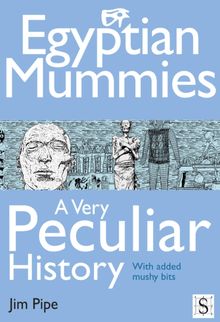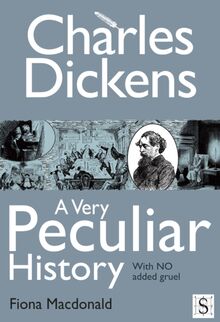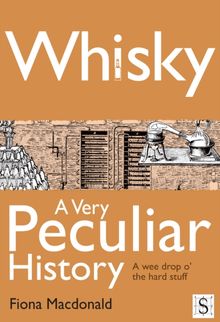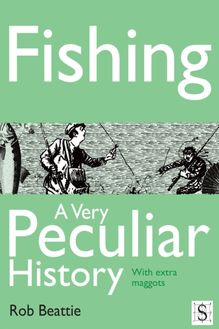-
 Univers
Univers
-
 Ebooks
Ebooks
-
 Livres audio
Livres audio
-
 Presse
Presse
-
 Podcasts
Podcasts
-
 BD
BD
-
 Documents
Documents
-
- Cours
- Révisions
- Ressources pédagogiques
- Sciences de l’éducation
- Manuels scolaires
- Langues
- Travaux de classe
- Annales de BEP
- Etudes supérieures
- Maternelle et primaire
- Fiches de lecture
- Orientation scolaire
- Méthodologie
- Corrigés de devoir
- Annales d’examens et concours
- Annales du bac
- Annales du brevet
- Rapports de stage
La lecture à portée de main
Vous pourrez modifier la taille du texte de cet ouvrage
Découvre YouScribe en t'inscrivant gratuitement
Je m'inscrisDécouvre YouScribe en t'inscrivant gratuitement
Je m'inscrisEn savoir plus
Vous pourrez modifier la taille du texte de cet ouvrage
En savoir plus

Description
Sujets
Informations
| Publié par | Andrews UK |
| Date de parution | 19 décembre 2011 |
| Nombre de lectures | 0 |
| EAN13 | 9781908759306 |
| Langue | English |
Informations légales : prix de location à la page 0,0300€. Cette information est donnée uniquement à titre indicatif conformément à la législation en vigueur.
Extrait
Title Page
IRELAND, A VERY PECULIAR HISTORY
Written by
Jim Pipe
Created and designed by David Salariya
Publisher Information
First published in Great Britain in MMIX by Book House, an imprint of
The Salariya Book Company Ltd
25 Marlborough Place, Brighton BN1 1UB
www.salariya.com
www.book-house.co.uk
Digital edition converted and distributed in 2011 by
Andrews UK Limited
www.andrewsuk.com
Editors: Jamie Pitman, Tanya Kant
Assistant editor: Jodie Leyman
Additional Artwork: Michael Tickner
© The Salariya Book Company Ltd MMIX
All rights reserved. No part of this publication may be reproduced, stored in or introduced into a retrieval system or transmitted in any form, or by any means (electronic, mechanical, photocopying, recording or otherwise) without the written permission of the publisher. Any person who does any unauthorised act in relation to this publication may be liable to criminal prosecution and civil claims for damages.
Every effort has been made to trace copyright holders. The Salariya Book Company apologises for any omissions and would be pleased, in such cases, to add an acknowledgement in future editions.
Visit our website at
www.book-house.co.uk
or go to
www.salariya.com
for free electronic versions of:
You Wouldn’t Want to be an Egyptian Mummy!
You Wouldn’t Want to be a Roman Gladiator!
You Wouldnt Want to Join Shackleton’s Polar Expedition!
You Wouldn’t Want to Sail on a 19th-Century Whaling Ship!
Dedication
For Ewan and Daniel, two Irish Pipes!
JP
Quotes
‘The Irish gave the bagpipes to the Scots as a joke, but the Scots haven’t seen the joke yet.’
Oliver Herford
We have always found the Irish a bit odd. They refuse to be English.’
Winston Churchill
‘Everywhere I go I’m asked if I think the university stifles writers. My opinion is that they don’t stifle enough of them. There’s many a best-seller that could have been prevented by a good teacher.’
Flannery O’Connor
Ten things to thank the Irish For
If you thought Guinness was the only great Irish invention, think again:
1. Submarines – In 1881 John Holland invented a three-man submarine, which was used by Fenian rebels to try and sink British ships. The Fenians tried to steal it after they fell out with Holland, but only Holland knew how it worked.
2. Injections – In 1845, Francis Rynd invented the first syringe at Meath Hospital in Dublin.
3. H2O – William Higgins (1763–1825) invented a system of letters to identify chemicals, such as H for Hydrogen and O for Oxygen.
4. Bacon rashers – In 1820, Henry Denny discovered that sandwiching long pieces of bacon between two layers of dry salt helped preserve the meat.
5. ‘Bureaucracy’ – The word was first coined by the Irish writer, Lady Morgan (1776–1859).
6. Flavoured crisps – Invented by Joe Murphy, the first cheese and onion crisp was developed in 1954.
7. The ejector seat – Much loved by pilots and James Bond, the ejector seat was invented in 1946 by Irish engineer, Sir James Martin.
8. Irish coffee – Barman Joe Sheridan invented this mix of coffee, sugar, whiskey and thick cream as a pick-me-up for shivering transatlantic pilots at Foynes airport in the early 1940s.
9. Blue skies – OK, so Irish scientist John Tyndell (1820–1893) didn’t invent skies – but he did work out what makes them blue (dust in the air scatters the Sun’s blue rays). Tyndell also invented the modern foghorn and his light pipe led to the development of fibre optics.
10. Wind speed – In 1805, Irishman Sir Francis Beaufort developed a way of describing how windy it was outside – still known as the Beaufort scale.
Putting Ireland on the Map
Key:
1.Neolithic settlers appear, 7000BC
2.Scots settlers arrive, 1515
3.Launch of the Titanic, Belfast, 1912
4.Battle of the Yellow Ford, Co. Armagh, 1598
5.Battle of the Boyne, Drogheda, 1690
6.The Vikings arrive, 760
7.Grace O’Malley’s (1530–1600) pirate ship
8.Turoe stone, Bulluan, Co. Galway
9.Battle of Clontarf, Dublin, 1014
10.The Yankee Clipper arrives at Foynes Airport, 1939
11.Ogham stones of Co. Kerry, c.500
12.Cabbage Patch Revolution, Co. Tipperary, 1849
13.Norman Invasion begins, 1160s
14.Battle of Vinegar Hill, Co. Wexford, 1798
15.Copper mining, Co. Cork, 1800–1500 BC
16.French ships threaten off the coast of Bantry, Co. Cork, 1796
Some very peculiar Facts
•Ireland’s famous natural landmark, the Giant’s Causeway, found off the cliffs on the coast of North Antrim, is made up of around 40,000 hexagonal basalt columns. Legend has it that Finn MacCool laid the honeycomb-like columns as a pathway to reach his love on Staffa island, Scotland, where the columns are also found.
•One of Irishman Latham Valentine Blacker’s military inventions, the Hedgehog, showered mortar bombs at its target. It destroyed some 50 German submarines during World War II.
•In 2007, the inhabitants of the islands of Inis Mor and Inis Oirr clashed in a bid to crown themselves ‘the real Craggy Island’ – Craggy Island being the fictional setting of the Irish TV sitcom, Father Ted . The dispute was settled in front of thousands of fans by a football match at ‘The Friends of Father Ted’ festival. Inis Mor took the hallowed prize after a 2–0 win.
•At a whopping twenty-two letters in length, County Galway’s small village of Muckanaghederdauhaulia (‘Murceanach idir Dhá Sháile’ in Irish) is thought to be the longest place name in Ireland.
CHAPTER ONE: Ireland emerges from the mist:
An icy start
Before you stretches mile after mile of unbroken snow and ice. Not an animal or plant is in sight, and the eerie silence of this bleak wilderness is broken only by the howling winds of an Arctic storm.
Europe is in the grip of an Ice Age and most of Ireland lies buried beneath a giant sheet of ice. (The weight of the ice sheet pressed the land down by several metres. Once it had melted, the north of Ireland began to rise again. Malin Head in Co. Donegal is still rising by 2 to 3mm per year!) Deep below the surface, the shifting ice grinds against the land, carving out the smooth mountains and U-shaped valleys that will give Ireland its characteristic beauty. It will take thousands of years for the ice to retreat. Tough grasses will spread across the land and by 11,000 BC, the first trees will appear. Little by little, the polar desert will become the ‘Emerald Isle’ we recognise today.
The hush of the Ice Age was broken by the grunts, roars and squeaks of giant elk and the host of other animals that crossed the land bridge connecting Ireland with Britain and the rest of Europe. As the ice melted, sea levels rose. Around 12,000 years ago, the Irish Sea, then an enormous freshwater lake, was flooded with sea water. Four thousand years later, the waters of the North Sea swamped the land bridge with Europe, and Ireland became an island.
The first Irish rovers
Making the most of the warmer weather, Stone Age hunters spread north from France into Britain. Ireland, perched on the edge of the Atlantic Ocean, was the next step. They arrived in Ireland around 7000 BC, wading through shallow waters or sailing from southern Scotland in boats made from animal skins.
As hunter-gatherers, these people were always on the move, in search of their next meal. (They certainly got around, popping up in Lough Boora (Co. Offaly), Woodpark (Co. Sligo) and Mount Sandel.) One such band stopped at Mount Sandel in County Derry. Their domed mobile homes were made from bent wooden poles covered with animal skins and leafy branches, with a warming fire at the centre. They were tidy folk, depositing their rubbish in pits at the edge of the camp.
The remains found in these rubbish pits tell us that the first Irish men and women hunted boar, duck and wood pigeon using flint weapons. The dogs they hunted with sometimes became ‘emergency rations’. They also had a taste for hazelnuts, wild plums, salmon and eels. Living in small family and tribal groups, they shared everything. Though life was tough, these people found there was time to develop the age-old Irish love of games, banter and laughter.
Settling down
Around 6500 BC, a new wave of settlers arrived in Ireland. Some leap-frogged along the coasts of Spain and France in boats made from animal skins, while others trekked across Europe from the Middle East. Though few in number, the newcomers transformed Ireland forever with their big idea: farming.
These ‘blow-ins’ (an Irish expression for foreigners) showed the locals how to grow exotic crops such as barley and wheat, and how to keep goats, sheep and cattle. They also brought some clever gadgets: advanced stone cutting tools, pots for storing water, and polished stone axes to clear forests for farming. Some axes were made from a hard stone called porcellanite and were traded with people in Britain. It took a couple of thousand years, but by 4500 BC, Ireland was a land of farmers. (The hunter-gatherers weren’t wiped out, they just changed their ways: DNA tests reveal that over 75 per cent of Irish people today are related to these first inhabitants.) The Céide Fields in County Mayo, built around 3700 BC, had long stone walls which divided herds of cattle into neat pens. Home to 500 people, Céide was the biggest cattle ranch in Stone Age Europe.
Loot on legs
In ancient Ireland,
-
 Univers
Univers
-
 Ebooks
Ebooks
-
 Livres audio
Livres audio
-
 Presse
Presse
-
 Podcasts
Podcasts
-
 BD
BD
-
 Documents
Documents
-
Jeunesse
-
Littérature
-
Ressources professionnelles
-
Santé et bien-être
-
Savoirs
-
Education
-
Loisirs et hobbies
-
Art, musique et cinéma
-
Actualité et débat de société
-
Jeunesse
-
Littérature
-
Ressources professionnelles
-
Santé et bien-être
-
Savoirs
-
Education
-
Loisirs et hobbies
-
Art, musique et cinéma
-
Actualité et débat de société
-
Actualités
-
Lifestyle
-
Presse jeunesse
-
Presse professionnelle
-
Pratique
-
Presse sportive
-
Presse internationale
-
Culture & Médias
-
Action et Aventures
-
Science-fiction et Fantasy
-
Société
-
Jeunesse
-
Littérature
-
Ressources professionnelles
-
Santé et bien-être
-
Savoirs
-
Education
-
Loisirs et hobbies
-
Art, musique et cinéma
-
Actualité et débat de société
- Cours
- Révisions
- Ressources pédagogiques
- Sciences de l’éducation
- Manuels scolaires
- Langues
- Travaux de classe
- Annales de BEP
- Etudes supérieures
- Maternelle et primaire
- Fiches de lecture
- Orientation scolaire
- Méthodologie
- Corrigés de devoir
- Annales d’examens et concours
- Annales du bac
- Annales du brevet
- Rapports de stage

